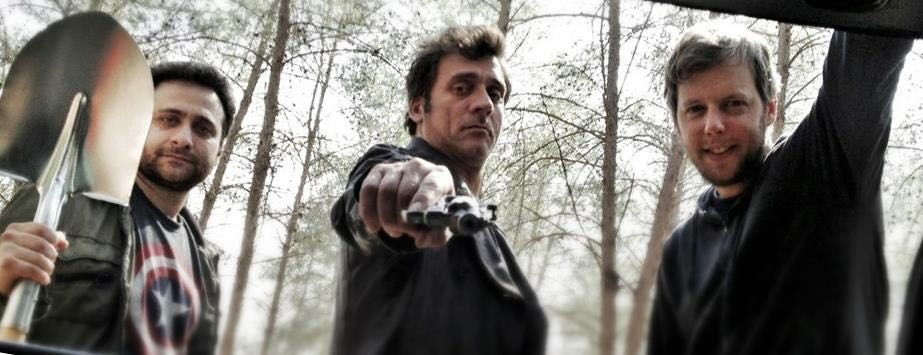Exciting all MaddWolf Pack episode! Daniel Baldwin, aka The Schlocketeer, and Brandon Thomas join us to talk about a topic we stole from their Twitter conversation: which directors not known for horror made the best horror movies?
Be sure to listen because Daniel and Brandon both bring much knowledge (plus extra movie titles!) to the conversation. But here’s our Top 5:
5. Nosferatu, the Vampire (1979, Werner Herzog)
Sure, it’s another Dracula, but because it’s another Dracula by way of Murnau’s masterpiece Nosferatu, and it’s written and directed by the great Werner Herzog, it’s weird and wonderful.
Herzog uses the imagery Murnau created – in particular, the naked mole rat of a vampire – to turn vampirism into a pestilence to evoke the Black Plague of Europe. Klaus Kinski is that naked mole rat, and he is glorious.
Isabelle Adjani is the pure of heart maiden who is his undoing, but the way Herzog reimagines Jonathan Harker gives the film a cynical twist that feels like a surprise within this dreamlike adaptation. Gorgeous location shooting and an astonishing score help Herzog create a suffocating but captivating atmosphere.
4. The Haunting (1963, Robert Wise)
Coming off the big epics of The Sound of Music and West Side Story, no one would have expected the intimate psychological horror of Robert Wise’s The Haunting.
Shirley Jackson fans have to appreciate the way the film remains true to her vision of horror. Fans of horror have to appreciate Wise’s unbelievable knack for generating terror with sound design and imagination.
Yes, the performances are magnificent – especially Julie Harris, whose bitter Eleanor is picture perfect. But Wise’s mastery of form is what makes this G-rated film a lasting terror.
3. Hour of the Wolf (1968, Ingmar Bergman)
Like all Bergman films, this hypnotic, surreal effort straddles lines of reality and unreality and aches with existential dread. But Bergman and his star, Max von Sydow, cross over into territory of the hallucinatory and grotesque, calling to mind ideas of vampires, insanity and bloodlust as one man confronts repressed desires as he awaits the birth of his child.
As wonderful as von Sydow is as the central figure, a man spiraling toward insanity, it’s the heartbreaking Liv Ullman who owns this movie. Heartbreaking, solid, and the most unusual combination of strength and weakness, her Alma grounds the surreal elements of the movie.
The result is gorgeous, spooky, and so very sad. It’s one of the most underappreciated films of Bergman’s career.
2. The Shining (1980, Stanley Kubrick)
You know who you probably shouldn’t hire to look after your hotel?
Jack Nicholson.
A study in atmospheric tension, Kubrick’s vision of the Torrance family collapse at the Overlook Hotel is both visually and aurally meticulous. It opens with that stunning helicopter shot, following Jack Torrance’s little yellow Beetle up the mountainside, the ominous score announcing a foreboding that the film never shakes.
The hypnotic, innocent sound of Danny Torrance’s Big Wheel against the weirdly phallic patterns of the hotel carpet tells so much – about the size of the place, about the monotony of the existence, about hidden perversity. The sound is so lulling that its abrupt ceasing becomes a signal of spookiness afoot.
Nicholson outdoes himself. His early, veiled contempt blossoms into pure homicidal mania, and there’s something so wonderful about watching Nicholson slowly lose his mind. Between writer’s block, isolation, ghosts, alcohol withdrawal, midlife crisis, and “a momentary loss of muscular coordination,” the playfully sadistic creature lurking inside this husband and father emerges.
He’s not the caretaker management expected, but really, was Grady? Like Grady and Lloyd the bartender, Jack Torrance is a fixture here at the Overlook.
1. Silence of the lambs (1991, Jonathan Demme)
It’s to director Jonathan Demme’s credit that Silence made that leap from lurid exploitation to art. His masterful composition of muted colors and tense but understated score, his visual focus on the characters rather than their actions, and his subtle but powerful use of camera elevate this story above its exploitative trappings. Of course, the performances didn’t hurt.
Hannibal Lecter ranks as one of cinema’s scariest villains, and that accomplishment owes everything to Anthony Hopkins’s performance. It’s his eerie calm, his measured speaking, his superior grin that give Lecter power. Everything about his performance reminds the viewer that this man is smarter than you and he’ll use that for dangerous ends.
Demme makes sure it’s Lecter that gets under our skin in the way he creates a parallel between Lecter and FBI investigator Clarice Starling (Jodie Foster). It’s Clarice we’re all meant to identify with, and yet Demme suggests that she and Lecter share some similarities, which means that maybe we share some, too.









